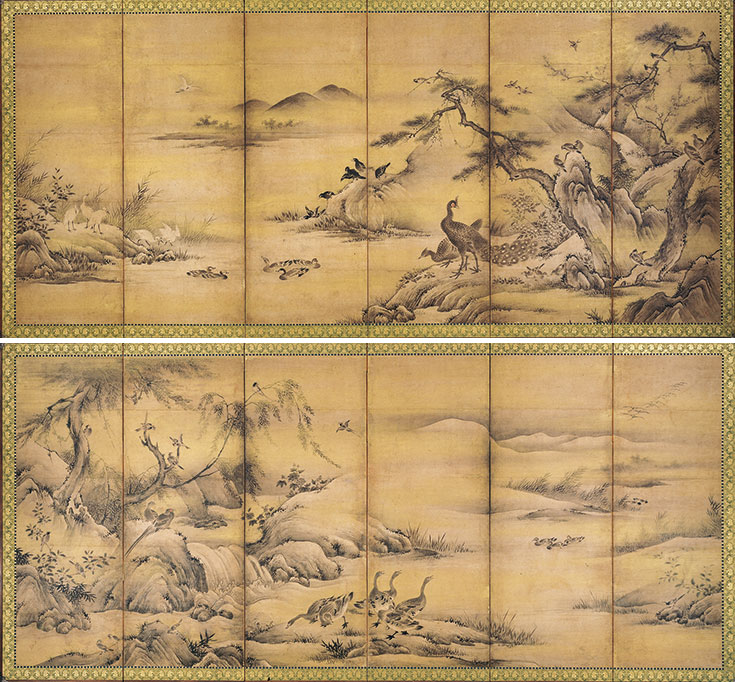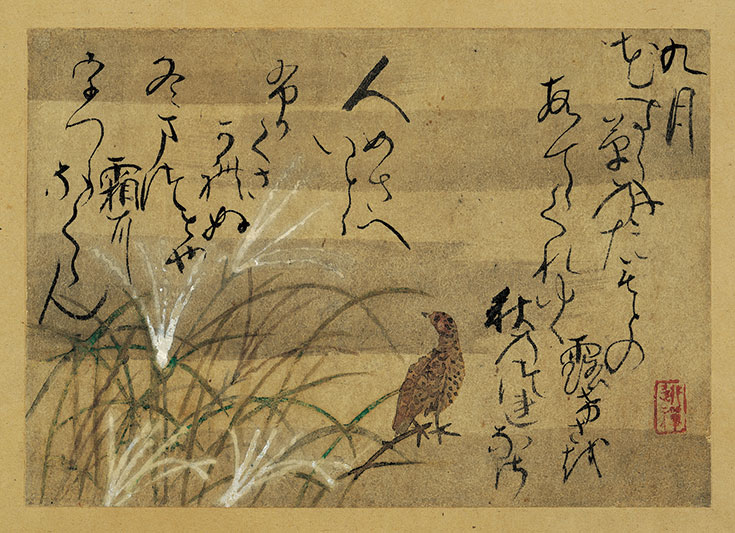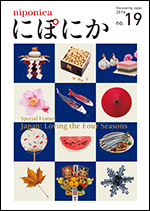niponica is a web magazine that introduces modern Japan to people all over the world.
2016 No.19
Japan: Loving the Four Seasons

Four Seasons and Art
Text: Noguchi Takeshi, Chief Curator, Curatorial Division, Nezu Museum
Photos: Nezu Museum

Shiki kacho-zu byobu (“Birds and Flowers of Four Seasons”) Attributed to Kanō Motonobu Japan Muromachi period, 16th century Nezu Museum
Japanese Culture and the Four Seasons
Seasonal weather occurs throughout the world, and Japan, positioned in the mid latitudes, is susceptible to effects from air masses that form over oceans and the Asian continent. Thus, spring, summer, fall, and winter are clearly divided, each with its rich features.
In such climate, the culture responded sensitively to the changing seasons. Washoku (Japanese cuisine), now a UNESCO Intangible Cultural Heritage, is one example. Another is waka poetry of 5-7-5-7-7 syllabics. Sensitivity to nature is everywhere apparent throughout Kokin Wakashu, a Heian-era (794–1185) poetry anthology compiled in 905 that began the tradition of opening a collection with the four-season theme.

Susuki ni uzura-zu (“Quail and Pampas Grass”) By Ogata Kenzan Japan Edo period, dated 1743 Nezu Museum
Shiki-e and Tsukinami-e
The four seasons became an important theme in art as well as poetry. A folding screen appearing the same year as Kokin Wakashu shows a four-season painting (shiki-e) being created. At this time, Japan-themed yamato-e painting was born in contrast to China-themed kara-e. From then, shiki-e (seasonal) and tsukinami-e (monthly) paintings became the main subjects of yamato-e screens of the Heian era.
Early in the Kamakura period (1185–1333), poet and courtier Fujiwara no Teika in 1214 composed poems on monthly flowers and birds that were to be painted. The poems were based on the tradition of Heian-era tsukinami-e. When interest revived for court culture during the Edo period (1603–1867), paintings in the Birds and Flowers of the Twelve Months genre—based on Teika’s poems—became popular.
In Ogata Kenzan’s album of this genre, Quail and Pampas Grass stands for September. Note how the gifted painter, calligrapher, and potter deploys simple brushstrokes that precisely capture the dark mood of autumn.





